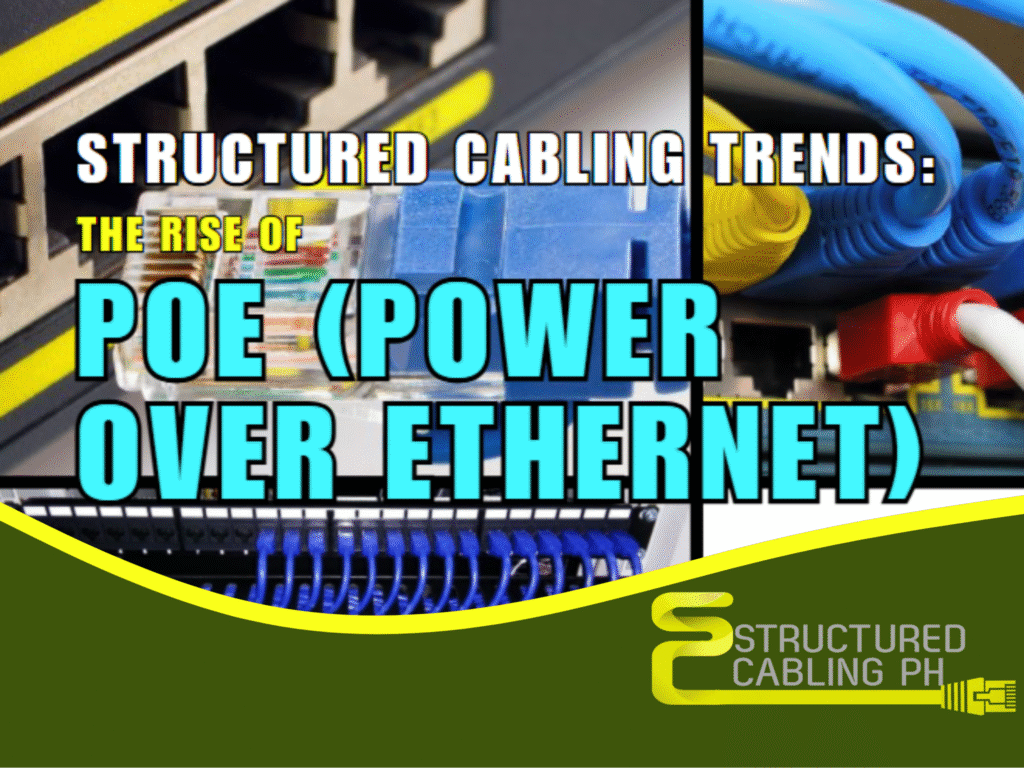
Structured Cabling Trends: The Rise of PoE (Power over Ethernet)
How One Cable Is Revolutionizing Power and Data Delivery
Structured cabling continues to evolve to meet the demands of today’s smart buildings, cloud-driven systems, and high-bandwidth applications. One of the most exciting and transformative trends in this space is the rise of Power over Ethernet (PoE).
PoE allows both electrical power and data to be transmitted over a single Ethernet cable, eliminating the need for separate power sources and simplifying installation. As devices become smarter and more connected, PoE is becoming the go-to solution for modern infrastructure.
Let’s explore how this technology is shaping the future of structured cabling.
What Is PoE and Why It Matters
PoE (Power over Ethernet) enables standard network cables (like Cat5e, Cat6, or Cat6a) to carry both power and data to connected devices.
This means you can power and connect devices like:
- IP cameras
- VoIP phones
- Wireless access points
- Smart lighting systems
- Access control devices
- Digital signage
Why it matters: PoE reduces costs, improves flexibility, and supports next-generation smart building applications—all through a simplified cable infrastructure.
Top Benefits Driving the Rise of PoE
1. Simplified Installation
- One cable for both power and data reduces clutter
- No need for electrical outlets near each device
- Easier deployment in hard-to-reach or ceiling-mounted locations
2. Cost Savings
- Lower labor and material costs
- Eliminates the need for licensed electricians in many cases
- Reduces downtime and maintenance expenses
3. Flexibility and Scalability
- Quickly add or relocate devices without extensive rewiring
- Supports dynamic office environments and future expansions
- Ideal for growing IoT ecosystems
4. Centralized Power Management
- Power devices through a central network switch
- Enables remote monitoring and control
- Increases safety with controlled shutdown during emergencies
PoE Trends to Watch in Structured Cabling
1. Growing Adoption of PoE+ and PoE++
- PoE (IEEE 802.3af) delivers up to 15.4W
- PoE+ (IEEE 802.3at) supports up to 30W
- PoE++ (IEEE 802.3bt) provides up to 60W or 100W—ideal for high-power devices like smart displays and LED lighting
2. PoE in Smart Buildings
- Lighting, HVAC systems, and security devices are increasingly powered via PoE
- PoE supports real-time monitoring, automation, and energy efficiency goals
3. Enhanced Structured Cabling Standards
- Cat6a and Cat8 cabling are becoming preferred for PoE applications to reduce heat buildup and ensure performance
- Cabling designs are incorporating better thermal management and load balancing
Challenges and Considerations
While PoE offers many advantages, it’s important to address:
- Heat Dissipation: Higher wattage PoE can increase cable temperature—requiring high-quality cabling and proper spacing
- Distance Limits: Ethernet cables have a standard 100-meter limitation
- Compatibility: Not all legacy network equipment supports PoE—upgrades may be needed
Tip: Plan your structured cabling system with PoE in mind, using certified cabling and proper design layouts to avoid performance issues.
Final Thoughts
PoE is more than just a trend—it’s a powerful solution transforming how we think about connectivity and power delivery. As smart buildings, IP-based technologies, and energy-efficient systems continue to grow, structured cabling systems with PoE support are becoming essential infrastructure.
Ready to Future-Proof Your Cabling System?
TheVastResultteam is equipped to design structured cabling systems that support PoE for offices, commercial facilities, and smart buildings. We handle everything from evaluation to installation, ensuring your network is secure, scalable, and future-ready.
Contact VastResult today at (02) 8404 0740 or email us atsupport@vastresult.com for a free consultation or site assessment!

